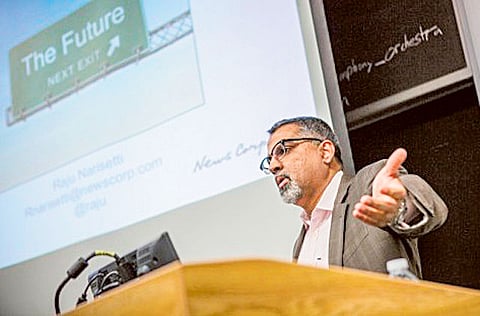Journalism in the age of social media
Telling a good story will always trump changes brought on by technology

Predicting what is in store in the media business can be quite tricky. But that has not stopped media guru Raju Narisetti to reflect on the likely shape of things to come.
He is senior vice-president and deputy head of strategy at the new News Corporation, a network of media companies that includes The Wall Street Journal and The Times (London).
Digital content has led to increasing audience fragmentation, and which is reflected in the options that have opened up for advertisers. So much so, advertisers have become the newsroom’s new competitor. The rise of “sponsored content” and “native advertising” are directly promoting brands to the consumer.
Social media has an important role in this scenario, with companies producing their own content through videos and dedicated campaigns. Narisetti reckons publishers will need to help advertisers engage their brands with readers.
“This is the way publishers can guarantee the opportunity to make any significant revenue in digital,” he said. “There are no more spaces to accommodate. To survive in the digital environment it’s necessary to adapt, experiment and anticipate what’s coming next.”
Compelling experiences
Readers are now “promiscuous” not only in regard to where they get the news but also the devices through which they access information. To get readers’ attention, “amazing” content is not enough; it is necessary to create compelling experiences that keep readers coming back.
Impactful digital journalism can engage audiences and give readers the interaction between content and technology. It is thus necessary reporters, site developers and designers work as a team to create the contents.
Working as a team can be extremely challenging for professionals, but it is important that journalists can speak the language of site developers. The latter needs to understand what an experience journalist would want to give readers.
“In the print world, there is a position called circulation marketer, whose job is to figure out how to make money. That doesn’t exist in the digital world,” said Narisetti. “In 2013, the definition of a journalist must include ‘I will do everything I can to bring more people to my journalism’.”
Web videos offer a significant monetisation opportunity as pre-roll advertising can be embedded into the content. “Video is the first form of journalism where we have figured out that when somebody watches it — no matter where they watch it — the business model travels with it,”, says Narisetti.
Sign up for the Daily Briefing
Get the latest news and updates straight to your inbox


